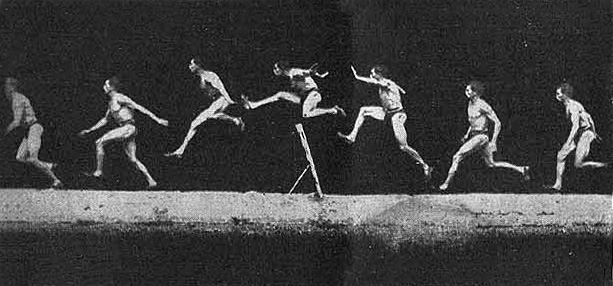In recent versions of these animations, as in the movie above, a grid of thin transparent lines in a mask is passed over a composite graphic image, to give an illusion of movement. In earlier versions, made in France in the the 1920’s and called Ombro cinema or cinema enfantin, the grid of transparent lines was static in a viewing frame, and a strip of the composites was spooled behind it. (There’s a nice demo from the North West Puppet Center in Seattle). Earlier versions still go back to the 1890’s and are described in a very authoritative Wikipedia entry.
A beautiful recent booklet of barrier-grid animations is Colin Ord’s Magic Moving Images. In 2006 a new version of the technique, in which the act of opening a book automatically draws the grid over the image, was patented by Rufus Butler Seder, called Scanimation. He’s also published a number great books for kids using his process.
(By the way, there also used to be an entirely separate early computer animation machine, in the 1960’s, called The Scanimate).
In Seder’s and Ord’s books, the illusion happens in the real world, when you pass a real striped acetate mask over the composite base image. My demo is an animation that faithfully follows the real world process, as if a real striped mask was being passed over the base image. I borrowed the jumping man from this composite photo by nineteenth century movement scientist Etienne Marey.
To make a barrier grid animation, you reduce the subject in each ‘frame’ of the original movie into a black silhouette, and then replace the black infill with a hatching of just a few vertical lines.
The hatched silhouettes are then combined into a composite image, like the one in the animation at the head of the post. As the striped mask passes over it, only one frame at a time is revealed. The jumper in the final, striped silhouette (right hand of the three images) above is barely recognisable as a figure. We see the jumper much more clearly in the movie. I find it a bit magical the way the jumper quite gradually appears in the movie as the mask begins to move over the composite image from the left. Our brains can discover figures in patterns of amazingly sparse data, if only they move coherently, as when the human body is represented just by dots at the key rotation points (such as knees and elbows).
Want to have a go at making a barrier grid animation yourself?


